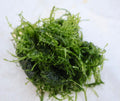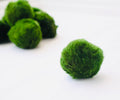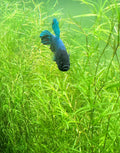Facts and Overview About Albino Tiger Barb Fish
The albino tiger barb is an attractive yellow or creamy-colored background with whitish stripes morphing from the tiger barb (Puntius tetrazona). Several albino variations exist, including gold and platinum body colors, all with beautiful red accents on the nose and fins.
While mature specimens may fade slightly, a school of these lively fish in a large aquarium makes for an awesome display. The biggest physical difference between these and regular tiger barbs is that albinos do not always have gill covers.
Popularity and Availability
When first introduced to the hobby, albino tiger barbs received mixed reactions—some aquarists loved them; others were indifferent. As a result, they became less popular than standard tiger barbs, but with the emergence of red, gold, and platinum strains, they’re becoming more sought after.
These variations are sold under names like:
Gold Tiger Barb
Golden Platinum Tiger Barb
Albino Golden Tiger Barb
Red Tiger Barb
Blood Red Tiger Barb
Behavior & Compatibility
These fish are easy to keep, making them great for aquarists of all experience levels. They are hardy if their water is clean with regular water changes.
Albino tiger barbs are active, fast-swimming fish that must be kept in schools of at least 6 or 7.
Nippy behavior is common in small groups or when kept singly.
Best kept with other active species—avoid slow or long-finned fish like gouramis and angelfish.
A mixed school of albino and regular tiger barbs can create a beautiful contrast.
Add other varieties like longfin tiger barbs and green tiger barbs for an exciting tank.
Habitat: Distribution & Background
Scientific Name: Puntius tetrazona
Native Regions: Malay Peninsula, Sumatra, Borneo, possibly Thailand and Cambodia
Preferred Habitat: It loves to swim in a quiet forest streams with clear, oxygen-rich water
Substrate: Sand and rocks with dense vegetation
Diet in Nature: Insects, diatoms, algae, small invertebrates, and detritus
Albino Variant: A captive-bred morph with no known wild populations
Description and Fish Keeping Difficulty
Round, deep body with high back and pointed head
No gill covers in some individuals
Max Length: ~7 cm (usually smaller in aquariums)
Lifespan: 6–7 years with proper care
Creamy/yellow body with reduced whitish stripes (compared to black stripes in regular tiger barbs)
Red highlights on dorsal, tail, and ventral fins
Bright red snout during spawning
Great for beginner aquarists
Slightly weaker than regular tiger barbs—more prone to disease if water quality is poor
Foods and Feeding
Omnivores: Will eat live, fresh, and flake foods
Daily Diet: High-quality flake food
Treats: Brine shrimp, bloodworms
Feed only what they can eat in
3 minutes if feeding multiple times a day
5 minutes if feeding once daily
Avoid overfeeding—albino tiger barbs will eat as much as offered
Aquarium Care
Clean water is crucial—susceptible to ick
Aquariums are closed systems: Regular maintenance is required
Change 20–25% of water monthly
If heavily stocked, do biweekly changes
Aquarium Setup
Swims in all parts of the tank, prefers the middle
Max size < 3 inches → Minimum tank size: 15 gallons, but ideally 30 gallons
Ensure the tank is
Covered (they can jump)
Well-filtered
Planted (especially on the sides and back)
Includes open swimming areas
Features a sandy substrate and bogwood for a natural habitat feel
Efficient filter and good water movement help males show better coloration
Sexual Differences & Breeding
Females: Heavier, especially during spawning
Males: Smaller, more brightly colored with red noses during spawning
Breeding albino tiger barbs is moderately easy
Sexually mature at 6–7 weeks, around ¾ to 1 inch long
Egg scatterers: No specific breeding site
Spawning tank:
20 gallons
Sponge filter
Heater
Marbles as substrate to protect eggs
pH ~6.5, Temp 74–79°F
Spawning Process:
Female added first
Male joins after a few days.
Courting in the afternoon
Spawning in the morning—1–3 eggs at a time
Mature females can release 700+ eggs.
Remove parents post-spawn to prevent egg eating.
Eggs hatch in 48 hours; fry swim freely in 5 days.
Feed fry infusoria, liquid fry food, or baby brine shrimp 3x daily.
Monitor for leftover food—it can foul the water quickly.
Diseases and Prevention
Albino tiger barbs are hardy, but poor water quality leads to ick.
Anything added to the tank—fish, plants, or substrate—can introduce disease.
Always quarantine or clean new additions.
Disease outbreaks are often limited if caught early.
Best prevention = clean tank + balanced diet + low stress
Learn about common tank diseases and their symptoms.
Early detection is key to minimizing impact.
















